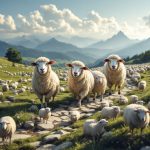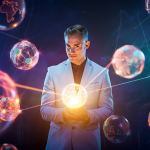
Disciplined Growth Investors: Your Key to Big Return
June 23, 2024
Disciplined growth investors focus on long-term growth rather than short-term gains in their investments. They take a measured and strategic approach to investing, seeking to identify high-quality companies with strong fundamentals and long-term growth potential. These investors generally have a higher risk tolerance and are willing to weather short-term market fluctuations for the potential of long-term growth.
The Power of Discipline and Patience
Discipline and patience are crucial virtues for successful long-term investing. Disciplined investors stick to their investment strategies even when faced with market volatility or tempting short-term opportunities. They understand that maintaining a consistent approach allows them to benefit from compound growth over time.
Patience is equally important, as it allows investors to ride out market downturns and avoid making emotional decisions based on short-term market movements. By remaining patient, investors can capitalize on the market’s long-term upward trend and avoid costly mistakes driven by fear or greed.
The Art of Selling Put Options
One strategy that disciplined investors can employ to potentially enhance returns is selling put options. This approach can be efficient after a substantial market correction or crash when put premiums tend to spike upwards.
Timing is Key: The best time to sell put options is often after a significant market downturn. During these periods, fear and uncertainty drive up the demand for put options, leading to higher premiums. This presents an opportunity for disciplined investors to sell puts and acquire stocks at a discount.
Benefits of Selling Puts: By selling put options, investors get paid for placing a limit order on a stock they’d be willing to buy at a lower price. The investor keeps the premium as a profit if the stock price doesn’t fall below the strike price by expiration. If the stock is assigned, the investor acquires shares at a discount to the current market price, factoring in the premium received.
For example, if an investor sells a put option with a strike price of $50 on a stock currently trading at $55, and receives a premium of $3, they effectively get to buy the stock at $47 ($50 – $3) if it’s assigned. This is a better price than placing a limit order at $50.
Leveraging Put Premiums for Call Options
Disciplined investors can extend their options strategy by using the premiums received from selling puts to purchase call options on strong stocks. However, it is crucial to focus on Long-Term Equity Anticipation Securities (LEAPS) rather than short-term options.
Why LEAPS?
LEAPS are long-term options contracts that typically expire in one to three years. They offer several advantages:
1. More time for the underlying stock to appreciate
2. Less time decay compared to short-term options
3. Potential for significant leverage if the stock price increases substantially
Investors can get free leveraged exposure to strong stocks by using put premiums to purchase LEAPS call options. This strategy allows them to maintain their core long-term holdings while positioning themselves for potential outsized gains if their selected stocks perform well.
Mass Psychology and Market Dynamics
Understanding Mob psychology is crucial for disciplined growth investors. The principles of mass psychology suggest that astute investors should not short the markets, as it’s akin to gambling. Instead, they wait until the masses buy or experience FOMO (fear of missing out) before taking the opposite position. Conversely, when the masses are panicking and selling, these investors look for opportunities to buy quality companies at a discount.
This approach aligns with contrarian investing, where investors seek to profit from extreme market sentiment. Disciplined investors can make more informed decisions and capitalise on market inefficiencies by recognizing when the crowd is overly optimistic or pessimistic.
The Risks of Shorting
While shorting can be profitable in the short term, the profit potential is limited, and the risk is unlimited. This is why disciplined growth investors generally avoid shorting as part of their strategy. Instead, they focus on identifying long-term investment opportunities to provide sustainable growth.
Let’s look at two examples to illustrate this point:
Monthly Chart of SQQQ (bearish fund)

If you held SQQQ through thick and thin, you would have been blown out of the water and probably out of this solar system. Despite all the pullbacks the Market has experienced, ranging from mild to insanely wild, SQQQ has dropped from 2,000 to 55.17. Contrast that with its sister fund, TQQQ.
The Monthly Chart of TQQQ: A Nearly Assured Recovery

If you don’t panic, your odds of recovering are close to 90%. Look at the above chart. You can make even more if you open additional positions when the Market trades in the highly oversold zone, as indicated by the green arrows. Bears can make money but must be fast and agile, or they won’t last. On the other hand, bulls have Time on their side, a luxury no bear will ever have.
If we were doing the reverse, shorting in a bull market, we would be dead in the water as the odds of making a comeback would be extremely slim. TQQQ will recoup its losses and then some, but the same cannot be said of SQQQ, which has lost over 90% since Dec 2018.
Disciplined growth investors understand the value of Time in the Market versus timing the Market. They focus on identifying quality companies with long-term growth potential and avoid short-term trading strategies that carry significant risk. By taking a strategic and disciplined approach to investing, they can achieve sustainable growth over Time and avoid the pitfalls of short-term market fluctuations.
The Value of Time in the Market
Disciplined growth investors understand the value of time in the market versus timing the market. They focus on identifying quality companies with long-term growth potential and avoid short-term trading strategies that carry significant risk. By taking a strategic and disciplined approach to investing, they can achieve sustainable growth over time and avoid the pitfalls of short-term market fluctuations.
As Michael Montaigne’s famous quote suggests, “The greatest thing in the world is to know how to belong to oneself.” This sentiment resonates with disciplined growth investors who understand the importance of staying true to their investment strategies and not being swayed by short-term market noise.
Conclusion
Disciplined growth investors prioritize long-term growth over short-term gains. They avoid shorting the market and instead focus on identifying quality companies with long-term growth potential. By incorporating strategies such as selling put options and using premiums to purchase LEAPS call options, these investors can potentially enhance their returns while maintaining a disciplined approach.
Understanding mass psychology and market dynamics allows these investors to make more informed decisions and capitalize on market inefficiencies. By staying patient, maintaining discipline, and focusing on long-term, disciplined growth, investors can navigate market fluctuations and increase their chances of achieving sustainable growth over time.














